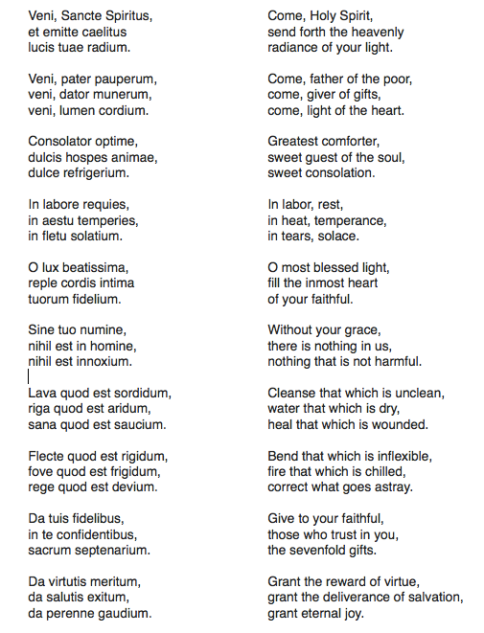Today’s gospel text, Luke 24.13-35, offers us audible glimpse of what preaching sounds like without the resurrection and with it. It’s rather unusual to post a sermon on the WithEarsToHear.org blog, but since this one in intended to orient the ear to the gospel of the crucified and risen Lord, we’ll give it a go.
It is the 3rd Sunday of Easter, and so we greet one another in the traditional way… in the way that our Christian sisters and brothers in the many languages of the world greet one another during the Easter season:
Christ is risen! Christ is risen indeed! Hallelujah!
Christ is risen! Christ is risen indeed! Hallelujah!
Christ is risen! Christ is risen indeed! Hallelujah!
So, listening-in to the conversation along the road to Emmaus, let’s turn this little Easter greeting upside-down for just a moment by asking: What does the message of Jesus sound like without the resurrection?
Our gospel reading for today (Luke 24.13-35) takes us back to the first Sunday of the empty tomb.
Early in the morning the women had gone there with the burial spices. Jesus was dead. No question about it. They had seen him draw his last breath. They had seen his body placed in the tomb. When they arrived on Sunday morning, the tomb was standing open, and Jesus’ body… his corpse was gone. In their confusion and grief, they were met by two angels, who preached to them a short sermon. You’ll recall:
Why do you look for the living among the dead? He is not here, but has risen. Remember how he told you, while he was still in Galilee, that the Son of Man must be handed over to sinners, and be crucified, and on he third day rise again. Lk 24.5b-7 (NRSV)
And so the women heard. They remembered. They trusted. And then, they went back to tell the rest. The good news that they carried with them, however, was not well received. It was truly unbelievable. With the exception of Peter, Jesus’ disciples were convinced that he was dead. Perhaps his body was missing, but he was most certainly dead. The women’s story was judged to be “an idle tale.”
Later that day, two of them had left Jerusalem and were on the way to Emmaus. A good long walk. As they walked, they talked. They were processing what had happened. A stranger shows up. We know who he was, but they did not. Though their eyes could see, they could not see him.
“What are you talking about?” he asked.
“Are you the only stranger around here who doesn’t know the stuff that’s happened these past days?”
“What stuff?” the stranger asked.
What comes next is important for our ears to hear not because it is the best sermon that has ever been preached. It is important for us to hear because it is a sermon preached as if Jesus did not rise from the dead.
…Jesus of Nazareth was a prophet mighty in deed and word before God and all the people… our chief priests and leaders handed him over to be condemned to death and crucified him. But we had hoped that he was the one to redeem Israel. Yes, and besides all this, it is now the third day since these things took place. Moreover, some women of our group astounded us. They were at the tomb early this morning, and when they did not find his body there, they came back and told us that they had indeed seen a vision of angels who said that he was alive. Some of those who were with us went to the tomb and found it just as the women had said; but they did not see him.
This is what a sermon sounds like that preaches a Jesus who is not raised from the dead. “Jesus was a prophet mighty in deed and word before God and all the people.” How wonderful! Jesus is an example, a mighty prophet even. But he’s dead. He’s a good enough example for us to imitate. He did good things. Helped people. He was a powerful speaker. But he’s dead. He was crucified. His corpse is misplaced. Death has won. Hope is lost.
If this were the only post-Easter sermon that we had, the story of Jesus would invite us to be good in word and deed. The story of Jesus would be about us. We can be just like our Jesus, good in word and deed as well. Model yourself on Jesus the prophet mighty in word and deed.
Of course there is nothing wrong with being good in word and deed. This is not the point. There are many organizations that focus on being good in word and deed. Boy Scouts. Girl Scouts. Kiwanis. Lions. Rotary. Peace Corps. Americorps. And many, many more. These organizations are good, and they do wonderful things in word and deed that help many, many people.
There is a difference, however, between these groups and the church… between a focus on our being good in word and deed and proclaiming Christ’s resurrection from the dead.
Without the resurrection, Jesus is a good example.
With the resurrection, Jesus defeats the power of death, and in this victory he takes upon himself our sin and our death and gives us his life.
You see, Jesus is more than a good example. Doing wonderful things in word and deed is not bad, but they do not save us from sin and death. Jesus saves. Jesus gives you his life. Jesus is risen from the dead.
The crucified and risen Lord continued to walk with these two disciples after their not-so-good sermon. In fact, he taught them. They had a walking bible study, during which Jesus — though they did not yet know it was he — “interpreted to them all the things about himself in all the scriptures.” While they didn’t get it in the moment, it paid off later after their eyes were opened.
When they reached their destination, they urged the stranger now traveling companion to come in with them. To stay with them. It was nearly evening after all.
And so, they came to the table. The stranger took bread, blessed and broke it, and he gave it to them. And in that moment, their eyes were opened. They recognized who this was. And when they saw, he was gone.
They could not hold onto him, but in the breaking of the bread he was there, and they saw.

Supper at Emmaus, 2001- He Qi
In the breaking of the bread, they heard his teaching to them on the road again. “Were not our hearts burning within us… while he was opening the scriptures to us?”
Jesus was not dead. He is alive.
With their eyes open, they had some really, really good news to share with the others.
They ran back.
They found their friends.
They greeted one another with something very similar to this little Easter sermon that we continue to proclaim:
Christ is risen! He is risen indeed! Hallelujah!
The message of the crucified Jesus Christ is that he is risen. He is not dead. He is not only an example for our good living. In fact, if we are only focused on our good living… on our wonderful words and deeds, if we are trying to seek God’s favor by these wonderful words and deeds, we’re missing the point. We’re practicing a Christianity without a resurrection. We are focusing on ourselves and what we do, rather than on what Jesus Christ has done.
Sisters and brothers in Christ, Jesus Christ died and rose from the dead for you and for the world. He took upon himself your sins and gives to you his life — a life that death can no longer overcome. You are invited to look first upon what God has done for you and for the world. The gospel calls us to look upon what God has done for you, for your neighbor, for your enemy, and for the whole world.
Your sins are forgiven, Christ took them on himself.
The power of death has been defeated. Christ died once for all.
The power of death is defeated. Christ is risen once for all.
Now come to this table, where the crucified and risen Jesus meets you in the breaking of bread.
Christ is risen! Christ is risen indeed! Hallelujah!
[Sermon delivered at St. Paul Lutheran Church, Lamotte, Iowa & St. John’s Lutheran Church, St. Donatus, Iowa, on 3rd Sunday of Easter, 4 May 2014.]







